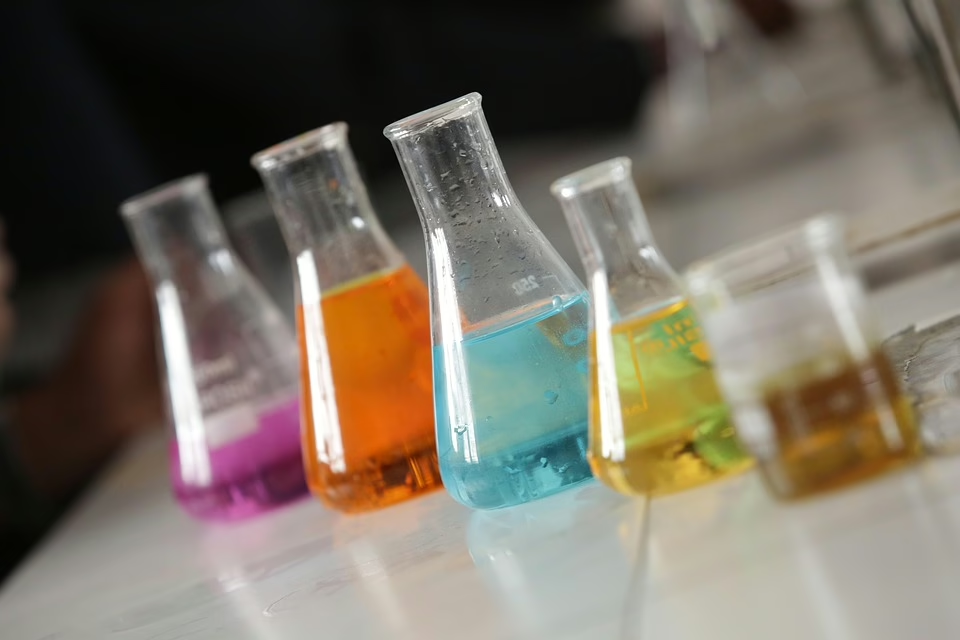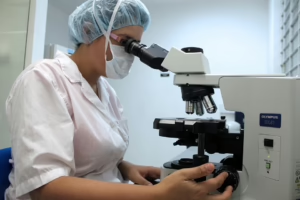From Lab to Life: Innovative Chemistry Solutions for Global Challenges
Abstract:
Chemistry, often dubbed the “central science,” stands at the nexus of diverse disciplines, offering profound potential to address some of the most pressing global challenges facing humanity. This article explores the transformative role of innovative chemistry in tackling issues such as climate change, sustainable energy, healthcare, food security, and water purification. We delve into specific examples of cutting-edge chemical technologies, highlighting their underlying scientific principles, potential benefits, and remaining challenges in their translation from laboratory research to real-world applications. By examining the progress being made in areas like carbon capture and utilization, advanced battery technology, drug discovery and delivery, precision agriculture, and membrane-based water treatment, this article aims to showcase the vital contribution of chemistry in building a more sustainable and equitable future. We also emphasize the crucial role of interdisciplinary collaboration, responsible innovation, and policy support in ensuring the successful deployment and societal acceptance of these groundbreaking chemical solutions.
Keywords: Chemistry, Global Challenges, Innovation, Sustainability, Climate Change, Energy, Healthcare, Food Security, Water Purification, Technology Transfer.
1. Introduction: The Central Role of Chemistry in a Changing World
The 21st century presents humanity with a complex and interconnected web of challenges, ranging from the escalating effects of climate change to the persistent issues of poverty, disease, and resource scarcity. Addressing these challenges requires innovative solutions across multiple sectors, and at the heart of many potential solutions lies chemistry.[1] Chemistry, with its focus on the composition, structure, properties, and reactions of matter, provides the fundamental understanding necessary to manipulate and transform materials in ways that can benefit society.[2]
From the development of life-saving pharmaceuticals to the creation of high-performance materials for renewable energy technologies, chemistry has consistently played a pivotal role in advancing human progress. However, the challenges we face today demand even more creative and impactful applications of chemical knowledge. We need to move beyond incremental improvements and embrace truly disruptive technologies that can fundamentally alter the way we produce energy, grow food, treat diseases, and manage our resources.
This article explores the exciting frontier of “lab to life” innovations in chemistry, focusing on examples where groundbreaking research is being translated into practical solutions for global challenges. We will examine the scientific principles behind these innovations, assess their potential benefits and limitations, and discuss the critical factors that influence their successful implementation. By highlighting the transformative power of chemistry, we hope to inspire further research, collaboration, and investment in this vital field.
2. Tackling Climate Change: Carbon Capture, Utilization, and Storage (CCUS)
Climate change, driven by the accumulation of greenhouse gases in the atmosphere, poses an existential threat to the planet. The burning of fossil fuels for energy production is the primary source of these emissions, with carbon dioxide (CO2) being the most significant contributor.[3] While transitioning to renewable energy sources is crucial, it is also essential to develop technologies that can capture CO2 from industrial sources and the atmosphere and prevent it from further contributing to global warming. This is where Carbon Capture, Utilization, and Storage (CCUS) comes into play.[4]
2.1. Carbon Capture Technologies:
Carbon capture technologies aim to separate CO2 from other gases in industrial flue streams or directly from the air (Direct Air Capture, DAC). Several different approaches are being pursued, each with its own advantages and disadvantages:
- Absorption: This is the most mature and widely used carbon capture technology. It involves using a liquid solvent, typically an amine solution, to absorb CO2 from the gas stream. The CO2-rich solvent is then heated to release the CO2, which can be compressed and stored or utilized.[5]
- Advantages: Relatively well-established technology, commercially available.
- Disadvantages: High energy consumption for solvent regeneration, potential for solvent degradation.
- Adsorption: This method uses solid materials, such as zeolites, activated carbon, or metal-organic frameworks (MOFs), to selectively adsorb CO2 onto their surface. The CO2 is then released by changing the pressure or temperature.[6]
- Advantages: Lower energy consumption than absorption, potentially more environmentally friendly.
- Disadvantages: Adsorbent capacity can be limited, sensitivity to moisture and other contaminants.
- Membrane Separation: This technology uses selectively permeable membranes to separate CO2 from other gases. The driving force for separation is a pressure or concentration gradient across the membrane.[7]
- Advantages: Relatively low energy consumption, compact design.
- Disadvantages: Membrane performance can be affected by temperature and pressure, limited CO2 selectivity.
- Direct Air Capture (DAC): DAC technologies aim to capture CO2 directly from the atmosphere. This is particularly important for addressing historical emissions and for capturing CO2 from dispersed sources.[8]
- Advantages: Can be deployed anywhere, can address historical emissions.
- Disadvantages: Very energy intensive, high cost.
2.2. Carbon Utilization:
Once CO2 is captured, it can be utilized as a feedstock for the production of various valuable products, effectively turning a waste product into a resource. This approach not only reduces CO2 emissions but also creates new economic opportunities.[9]
- Chemical Conversion: CO2 can be chemically converted into fuels, chemicals, and materials using various catalytic processes. For example, CO2 can be converted into methane, methanol, or other hydrocarbons using hydrogen.[10] It can also be used to produce polymers, building materials, and other valuable products.
- Challenges: Requires efficient and selective catalysts, often requires high energy input.
- Enhanced Oil Recovery (EOR): CO2 can be injected into oil reservoirs to enhance oil recovery. This process can increase oil production and also store CO2 underground.[11]
- Challenges: Can be expensive, potential for leakage from reservoirs.
- Mineral Carbonation: CO2 can be reacted with minerals, such as magnesium oxide or calcium oxide, to form stable carbonates. These carbonates can be used as building materials or disposed of safely.[12]
- Challenges: Requires large amounts of minerals, slow reaction rates.
2.3. Carbon Storage:
When CO2 cannot be utilized, it can be stored underground in geological formations. This involves injecting CO2 into deep saline aquifers, depleted oil and gas reservoirs, or unminable coal seams.[13] The CO2 is then trapped underground by impermeable layers of rock.
- Challenges: Potential for leakage from storage sites, requires careful site selection and monitoring.
The successful implementation of CCUS requires a multi-faceted approach, including continued research and development of more efficient and cost-effective technologies, supportive government policies, and public acceptance.
3. Sustainable Energy: Advanced Batteries and Solar Cells
Transitioning to a sustainable energy future requires replacing fossil fuels with renewable energy sources, such as solar, wind, and hydro power. However, these sources are intermittent, meaning that their availability varies depending on the time of day, weather conditions, and season. Therefore, energy storage is crucial for ensuring a reliable and consistent supply of renewable energy.[14]
3.1. Advanced Batteries:
Batteries are electrochemical devices that store energy in chemical form and release it as electricity on demand. Lithium-ion batteries are currently the dominant technology for portable electronics and electric vehicles (EVs), but they have limitations in terms of energy density, safety, and cost. Therefore, researchers are actively developing next-generation battery technologies that can overcome these limitations.[15]
- Lithium-Sulfur Batteries: Lithium-sulfur batteries offer the potential for significantly higher energy density than lithium-ion batteries. Sulfur is also a much more abundant and cheaper material than the metal oxides used in lithium-ion batteries.[16]
- Challenges: Sulfur is a poor conductor of electricity, and the formation of polysulfides during discharge can lead to capacity fade.
- Sodium-Ion Batteries: Sodium-ion batteries are similar to lithium-ion batteries but use sodium instead of lithium. Sodium is much more abundant and cheaper than lithium, making sodium-ion batteries a potentially more sustainable and affordable option.[17]
- Challenges: Sodium ions are larger than lithium ions, which can limit the energy density and cycle life of the battery.
- Solid-State Batteries: Solid-state batteries use a solid electrolyte instead of a liquid electrolyte. This eliminates the risk of electrolyte leakage and allows for the use of more energy-dense electrode materials, such as lithium metal.[18]
- Challenges: Solid electrolytes can have lower ionic conductivity than liquid electrolytes, and the interface between the solid electrolyte and the electrodes can be problematic.
3.2. Solar Cells:
Solar cells convert sunlight directly into electricity. Silicon-based solar cells are the most widely used technology, but they have limitations in terms of efficiency and cost. Researchers are actively developing new types of solar cells that can overcome these limitations.[19]
- Perovskite Solar Cells: Perovskite solar cells have shown remarkable progress in recent years, with efficiencies now exceeding 25%. Perovskite materials are relatively cheap and easy to manufacture.[20]
- Challenges: Perovskite materials can be unstable in the presence of moisture and oxygen, and they may contain lead, a toxic element.
- Organic Solar Cells: Organic solar cells use organic polymers or small molecules as the active material. They are lightweight, flexible, and potentially very cheap to manufacture.[21]
- Challenges: Organic solar cells typically have lower efficiencies and shorter lifetimes than silicon-based solar cells.
- Quantum Dot Solar Cells: Quantum dot solar cells use semiconductor nanocrystals as the active material. Quantum dots can be tuned to absorb specific wavelengths of light, potentially leading to higher efficiencies.[22]
- Challenges: Quantum dot solar cells are still in the early stages of development, and their long-term stability is a concern.
The development of advanced batteries and solar cells requires a deep understanding of materials science, electrochemistry, and device physics. Continued research and development in these areas is essential for accelerating the transition to a sustainable energy future.
4. Healthcare: Drug Discovery, Delivery, and Diagnostics
Chemistry plays a central role in all aspects of healthcare, from the discovery and development of new drugs to the design of advanced drug delivery systems and diagnostic tools. The ability to synthesize and manipulate molecules allows chemists to create new therapies for a wide range of diseases.[23]
4.1. Drug Discovery:
Drug discovery is the process of identifying and developing new chemical entities that can be used to treat diseases. This process typically involves several stages, including target identification, hit identification, lead optimization, and preclinical and clinical trials.[24]
- Target Identification: This involves identifying a specific molecule or pathway that is involved in the disease process.
- Hit Identification: This involves screening large libraries of chemical compounds to identify compounds that bind to the target molecule and modulate its activity.
- Lead Optimization: This involves modifying the structure of the hit compounds to improve their potency, selectivity, and pharmacokinetic properties.
- Preclinical and Clinical Trials: This involves testing the lead compounds in animal models and then in human volunteers to assess their safety and efficacy.
4.2. Drug Delivery:
Drug delivery refers to the method of administering a drug to a patient. The goal of drug delivery is to deliver the drug to the target site in the body at the optimal concentration and for the optimal duration.[25]
- Nanoparticles: Nanoparticles are tiny particles that can be used to encapsulate drugs and deliver them to specific cells or tissues in the body. Nanoparticles can be designed to be targeted to cancer cells, for example, by attaching antibodies or other targeting molecules to their surface.[26]
- Microfluidic Devices: Microfluidic devices are miniaturized devices that can be used to control the flow of fluids and cells. They can be used to deliver drugs directly to specific locations in the body, such as the brain or the eye.[27]
- Stimuli-Responsive Materials: Stimuli-responsive materials are materials that change their properties in response to a specific stimulus, such as pH, temperature, or light. These materials can be used to create drug delivery systems that release drugs only when the stimulus is present.[28]
4.3. Diagnostics:
Diagnostics are tests that are used to detect and diagnose diseases. Chemistry plays a crucial role in the development of new diagnostic tools, such as biosensors and imaging agents.[29]
- Biosensors: Biosensors are devices that detect the presence of a specific molecule in a sample. They can be used to detect biomarkers for diseases, such as cancer or heart disease.[30]
- Imaging Agents: Imaging agents are molecules that can be used to visualize specific tissues or organs in the body. They can be used to diagnose diseases, such as cancer, by highlighting abnormal cells or tissues.[31]
The development of new drugs, drug delivery systems, and diagnostic tools requires a multidisciplinary approach, involving chemists, biologists, engineers, and clinicians. Continued research and development in these areas is essential for improving human health and well-being.
5. Food Security: Precision Agriculture and Sustainable Fertilizers
With a growing global population, ensuring food security is a critical challenge. Chemistry can play a vital role in increasing agricultural productivity while minimizing the environmental impact of farming.[32]
5.1. Precision Agriculture:
Precision agriculture involves using technology to optimize agricultural practices, such as irrigation, fertilization, and pest control. This approach can help farmers to reduce waste, increase yields, and minimize the environmental impact of farming.[33]
- Sensors: Sensors can be used to monitor soil conditions, plant health, and weather patterns. This information can be used to optimize irrigation and fertilization practices.[34]
- Drones: Drones can be used to monitor crop health and to apply pesticides and fertilizers more efficiently. They can also be used to create detailed maps of fields, which can be used to optimize planting patterns.[35]
- Data Analytics: Data analytics can be used to analyze data from sensors and drones to identify patterns and trends. This information can be used to make better decisions about agricultural practices.[36]
5.2. Sustainable Fertilizers:
Conventional fertilizers can have negative environmental impacts, such as water pollution and greenhouse gas emissions. Researchers are actively developing more sustainable fertilizers that can reduce these impacts.[37]
- Slow-Release Fertilizers: Slow-release fertilizers release nutrients gradually over time, reducing the risk of nutrient runoff and leaching. They can also improve nutrient use efficiency, meaning that plants are able to absorb more of the nutrients applied.[38]
- Biofertilizers: Biofertilizers contain beneficial microorganisms that can help plants to absorb nutrients from the soil. They can also improve soil health and reduce the need for chemical fertilizers.[39]
- Nitrogen Fixation: Nitrogen fixation is the process of converting atmospheric nitrogen into a form that plants can use. Researchers are working to develop new methods of nitrogen fixation that are more efficient and sustainable.[40]
5.3. Crop Protection:
Protecting crops from pests and diseases is essential for ensuring food security. Chemistry plays a role in developing new and more sustainable crop protection agents.[41]
- Biopesticides: Biopesticides are derived from natural sources, such as bacteria, fungi, or plants. They are generally less toxic to humans and the environment than synthetic pesticides.[42]
- RNA Interference (RNAi): RNAi is a technology that can be used to silence specific genes in pests or pathogens. This can be used to control pests and diseases without harming beneficial organisms.[43]
- Precision Delivery Systems: Precision delivery systems can be used to deliver pesticides and other crop protection agents more efficiently, reducing the amount of chemicals that are released into the environment.[44]
The application of chemistry to agriculture is essential for increasing food production in a sustainable manner. Continued research and development in this area is critical for ensuring food security for a growing global population.
6. Water Purification: Membrane Technology and Advanced Oxidation Processes
Access to clean and safe water is a fundamental human right, yet billions of people around the world lack access to this essential resource. Chemistry plays a crucial role in developing technologies for water purification and desalination.[45]
6.1. Membrane Technology:
Membrane technology involves using selectively permeable membranes to separate contaminants from water. This technology is used in a variety of applications, including desalination, wastewater treatment, and drinking water purification.[46]
- Reverse Osmosis (RO): Reverse osmosis is a pressure-driven membrane process that is used to remove salts and other contaminants from water. It is the most widely used technology for desalination.[47]
- Ultrafiltration (UF): Ultrafiltration is a pressure-driven membrane process that is used to remove suspended solids, bacteria, and viruses from water. It is often used as a pretreatment for reverse osmosis.[48]
- Nanofiltration (NF): Nanofiltration is a pressure-driven membrane process that is used to remove multivalent ions and organic molecules from water. It is used in a variety of applications, including water softening and removal of pharmaceuticals from wastewater.[49]
6.2. Advanced Oxidation Processes (AOPs):
Advanced oxidation processes (AOPs) are chemical processes that use strong oxidants, such as ozone, hydrogen peroxide, and UV light, to degrade organic contaminants in water. These processes are effective at removing a wide range of contaminants, including pharmaceuticals, pesticides, and industrial chemicals.[50]
- Ozonation: Ozonation involves using ozone to oxidize organic contaminants in water. Ozone is a powerful oxidant that can effectively degrade many different types of contaminants.[51]
- UV/H2O2: This process involves using UV light and hydrogen peroxide to generate hydroxyl radicals, which are highly reactive and can degrade organic contaminants in water.[52]
- Fenton’s Reagent: Fenton’s reagent is a mixture of iron and hydrogen peroxide that is used to generate hydroxyl radicals. It is effective at degrading a wide range of organic contaminants, but it can also produce iron sludge.[53]
6.3. Adsorption:
Adsorption is a process that uses solid materials, such as activated carbon, to remove contaminants from water. Activated carbon is a highly porous material that has a large surface area, making it effective at adsorbing organic contaminants.[54]
The development of new and more efficient water purification technologies is essential for ensuring access to clean and safe water for all. Continued research and development in this area is critical for addressing the global water crisis.
7. Challenges and Opportunities in Translating Chemical Innovations
While the potential of innovative chemistry to address global challenges is immense, significant hurdles remain in translating laboratory discoveries into real-world solutions.
- Scalability: Many chemical processes that work well on a small scale in the lab become inefficient or uneconomical when scaled up to industrial production levels.[55]
- Cost: Novel chemical technologies often require expensive raw materials, complex equipment, or energy-intensive processes, making them economically uncompetitive with existing solutions.[56]
- Toxicity and Environmental Impact: New chemicals and materials must be thoroughly evaluated for their potential toxicity to humans and the environment. Sustainable and environmentally friendly synthesis and disposal methods are crucial.[57]
- Intellectual Property and Commercialization: Protecting intellectual property and attracting investment are essential for translating research into commercially viable products. Collaboration between academia and industry is vital for bridging the gap between discovery and deployment.[58]
- Regulatory Approval and Public Acceptance: New chemical technologies must meet rigorous regulatory standards to ensure their safety and efficacy. Public education and engagement are crucial for building trust and acceptance of these innovations.[59]
Overcoming these challenges requires a coordinated effort involving researchers, engineers, policymakers, and the public. Strategic investments in research and development, supportive regulatory frameworks, and public-private partnerships are essential for accelerating the translation of chemical innovations into solutions for global challenges.
8. The Importance of Interdisciplinary Collaboration and Responsible Innovation
The complex nature of global challenges demands a truly interdisciplinary approach. Chemists must collaborate with engineers, biologists, physicists, economists, and social scientists to develop holistic solutions that address the technical, economic, and social dimensions of these challenges.[60]
Furthermore, it is crucial to embrace the concept of “responsible innovation,” which emphasizes the importance of considering the ethical, social, and environmental implications of new technologies from the earliest stages of development. This involves engaging stakeholders in the innovation process, promoting transparency and accountability, and ensuring that new technologies are used in a way that benefits society as a whole.[61]
9. Conclusion: Chemistry as a Catalyst for a Sustainable Future
Chemistry stands as a powerful and indispensable tool in the fight against global challenges. From mitigating climate change through carbon capture and utilization to ensuring food security through precision agriculture and providing access to clean water through advanced purification technologies, the innovative applications of chemistry are transforming the world around us.
However, realizing the full potential of chemistry requires a concerted effort to overcome the challenges of scalability, cost, toxicity, and regulatory approval. By fostering interdisciplinary collaboration, embracing responsible innovation, and providing strategic support for research and development, we can unlock the transformative power of chemistry and build a more sustainable, equitable, and prosperous future for all. The journey from lab to life is complex, but the potential rewards are immeasurable.
References
[1] Atkins, P. W. Atkins’ Physical Chemistry. Oxford University Press, 2010.[2] Brown, T. L., et al. Chemistry: The Central Science. Pearson Education, 2015.
[3] IPCC. Climate Change 2021: The Physical Science Basis. Contribution of Working Group I to the Sixth Assessment Report of the Intergovernmental Panel on Climate Change. Cambridge University Press, 2021.
[4] Global CCS Institute. What is CCS? https://www.globalccsinstitute.com/what-is-ccs/ (Accessed October 26, 2023).
[5] Rao, A. B., & Rubin, E. S. (2002). A technical, economic, and environmental assessment of amine-based CO2 capture technology for power plant applications. Environmental Science & Technology, 36(20), 4467-4475.
[6] Bae, Y. S., & Snurr, R. Q. (2008). Optimal porous materials for adsorption-based CO2 capture. Angewandte Chemie International Edition, 47(50), 9830-9833.
[7] Baker, R. W. Membrane Technology and Applications. John Wiley & Sons, 2012.
[8] Keith, D. W. (2009). Air capture for climate change mitigation. Energy & Environmental Science, 2(6), 689-705.
[9] Aresta, M., & Dibenedetto, A. (2007). Carbon dioxide as a raw material. Chemical Reviews, 107(12), 5295-5310.
[10] Olah, G. A., Goeppert, A., & Prakash, G. K. S. Beyond Oil and Gas: The Methanol Economy. John Wiley & Sons, 2009.
[11] Bachu, S. (2003). CO2 storage in geological media in relationship to EOR. Energy Conversion and Management, 44(2), 315-332.
[12] Seifritz, W. (1990). CO2 disposal by means of silicates. Nature, 345(6275), 489-489.
[13] Benson, S. M., & Cole, D. R. (2008). CO2 sequestration in deep geological formations. Elements, 4(5), 325-331.
[14] Dunn, B., Kamath, H., & Tarascon, J. M. (2011). Electrical energy storage for the grid: a battery of choices. Science, 334(6058), 928-935.
[15] Tarascon, J. M., & Armand, M. (2001). Issues and challenges facing rechargeable lithium batteries. Nature, 414(6861), 359-367.
[16] Manthiram, A., Fu, Y., & Chung, S. H. (2014). Rechargeable lithium–sulfur batteries. Chemical Reviews, 114(23), 11751-11787.
[17] Larcher, D., & Tarascon, J. M. (2015). Towards greener and more sustainable batteries for electrical energy storage. Nature Chemistry, 7(1), 19-29.
[18] Janek, J., & Zeier, W. G. (2016). A solid future for battery electrolytes. Nature Materials, 15(8), 817-823.
[19] Green, M. A., Emery, K., Hishikawa, Y., Warta, W., & Dunlop, E. D. (2015). Solar cell efficiency tables (Version 46). Progress in Photovoltaics: Research and Applications, 23(7), 805-812.
[20] Snaith, H. J. (2013). Perovskites: the emergence of a new era for low-cost, high-efficiency solar cells. The Journal of Physical Chemistry Letters, 4(21), 3623-3630.
[21] Krebs, F. C. (2009). Fabrication and processing of polymer solar cells: a review of printing and coating techniques. Solar Energy Materials and Solar Cells, 93(4), 394-412.
[22] Nozik, A. J. (2002). Quantum dot solar cells. Physica E: Low-dimensional Systems and Nanostructures, 14(1-2), 115-120.
[23] Silverman, R. B., & Holladay, M. W. The Organic Chemistry of Drug Design and Drug Action. Academic Press, 2014.
[24] Drews, J. (2000). Drug discovery: a historical perspective. Science, 287(5460), 1960-1964.
[25] Allen, T. M., & Cullis, P. R. (2004). Drug delivery systems: entering the mainstream. Science, 303(5665), 1818-1822.
[26] Ferrari, M. (2005). Cancer nanotechnology: opportunities and challenges. Nature Reviews Cancer, 5(3), 161-171.
[27] Whitesides, G. M. (2006). The origins and the future of microfluidics. Nature, 442(7101), 368-373.
[28] Stuart, M. A. C., Huck, W. T. S., Genzer, J., Müller, M., Ober, C., Stamm, M., … & van der Gucht, J. (2010). Surface-confined responsive polymer materials. Nature Materials, 9(2), 101-113.
[29] Turner, A. P. F. (2013). Biosensors: sense and sensibility. Chemical Society Reviews, 42(8), 3184-3196.
[30] D’Orazio, P. (2011). Biosensors in clinical chemistry. Clinica Chimica Acta, 404(1-2), 1-29.
[31] Weissleder, R. (2001). Scaling down imaging: molecular sensors for in vivo diagnostics. Nature Biotechnology, 19(4), 316-317.
[32] Tilman, D., Balzer, C., Hill, J., & Befort, B. L. (2011). Global food demand and the sustainable intensification of agriculture. Proceedings of the National Academy of Sciences, 108(50), 20260-20264.
[33] Gebbers, R., & Adamchuk, V. I. (2010). Precision agriculture and food security. Science, 327(5967), 828-831.
[34] Walter, A., Finger, R., Huber, R., & Buchmann, N. (2017). Smart farming is key to developing sustainable agriculture. Proceedings of the National Academy of Sciences, 114(24), 6148-6150.
[35] Hunt Jr, E. R., Cavigelli, M. C., Daughtry, C. S. T., Walthall, C. L., & Kim, M. S. (2005). Remote sensing of crop leaf area index near saturation. Agronomy Journal, 97(6), 1452-1462.
[36] Wolfert, S., Ge, L., Verdouw, C., & Bogaardt, M. J. (2017). Big data in smart farming–a review. Agricultural Systems, 153, 69-80.
[37] Cordell, D., Drangert, J. O., & White, S. (2009). The story of phosphorus: global food security and food for thought. Global Environmental Change, 19(2), 292-305.
[38] Shaviv, A. (2005). Controlled release fertilizers. In Fertilizers, Pillaiyar, P. (Ed.). CRC press.
[39] Vessey, J. K. (2003). Plant growth promoting rhizobacteria as biofertilizers. Plant and Soil, 255(2), 571-586.
[40] Dos Santos, P. C., Fang, Z., Mason, A. J., & Li, H. (2021). Nitrogen fixation using electrochemical methods: present and prospective strategies. Energy & Environmental Science, 14(1), 236-262.
[41] Strange, R. N., & Scott, P. R. (2005). Plant disease: a threat to global food security. Annual Review of Phytopathology, 43, 83-116.
[42] Chandler, D., Bailey, A. S., Tatchell, G. M., Davidson, G., Greaves, J., & Grant, W. P. (2011). The development and implementation of biopesticides. Philosophical Transactions of the Royal Society B: Biological Sciences, 366(1573), 1875-1885.
[43] Baum, J. A., et al. (2007). Control of coleopteran insect pests through RNA interference. Nature Biotechnology, 25(11), 1322-1326.
[44] Derksen, R. C., & Gray, A. L. (1995). Development of a precision pesticide delivery system for orchards and vineyards. Transactions of the ASAE, 38(6), 1659-1664.
[45] Shannon, M. A., Bohn, P. W., Elimelech, M., Georgiadis, J. G., Marinas, B. J., & Mayes, A. M. (2008). Science and technology for water purification in the coming decades. Nature, 452(7185), 301-310.
[46] Drioli, E., Ali, A., & Macedonio, F. (2011). Membrane distillation: Recent developments and perspectives. Desalination, 279(1-3), 277-287.
[47] Fritzmann, C., Löwenberg, L., Wintgens, T., & Melin, T. (2007). State-of-the-art of reverse osmosis desalination. Desalination, 216(1-3), 1-76.
[48] Judd, S. (2011). The MBR Book: Principles and Applications of Membrane Bioreactors for Wastewater Treatment. Elsevier.
[49] Van der Bruggen, B., & Vandecasteele, C. (2003). Distillation vs. membrane filtration: overview of process evolutions in seawater desalination. Separation and Purification Technology, 33(1), 31-46.
[50] Andreozzi, R., Caprio, V., Marotta, R., & Vogna, D. (2005). Advanced oxidation processes (AOP) for water purification and remediation: Focus on heterogeneous photocatalysis. Catalysis Today, 90(1-2), 107-126.
[51] Von Gunten, U. (2003). Ozonation of drinking water: Part I. Oxidation kinetics and product formation. Water Research, 37(7), 1443-1467.
[52] Bolton, J. R., & Cater, S. R. (1994). Homogeneous photolysis of aqueous ozone: quantum yield of ozone decomposition and chain reaction length. Journal of Photochemistry and Photobiology A: Chemistry, 82(1-3), 1-10.
[53] Pignatello, J. J., Oliveros, E., & MacKay, C. L. (2006). Advanced oxidation processes for organic contaminant destruction—Overview. Critical Reviews in Environmental Science and Technology, 36(1), 1-84.
[54] Crini, G. (2006). Non-conventional low-cost adsorbents for dye removal: A review. Bioresource Technology, 97(9), 1061-1085.
[55] Ulrich, G. D., & Vasudevan, P. T. Chemical Engineering Process Design and Economics. Process Publishing, 2004.
[56] Seider, W. D., Seader, J. D., Lewin, D. R., Widagdo, S., & Nicholson, B. K. Product and Process Design Principles: Synthesis, Analysis and Evaluation. John Wiley & Sons, 2017.
[57] Anastas, P. T., & Warner, J. C. Green Chemistry: Theory and Practice. Oxford University Press, 1998.
[58] Auerswald, P. E., & Branscomb, L. M. (2003). Valleys of death and Darwinian seas: translating basic research into commercial innovations. The American Economic Review, 229-233.
[59] Stirling, A. (2007). A general framework for analysing uncertainty in science, technology and society. Science and Public Policy, 34(5), 309-321.
[60] National Academy of Engineering. Grand Challenges for Engineering. https://www.nae.edu/GrandChallenges (Accessed October 26, 2023).
[61] Stilgoe, J., Owen, R., & Macnaghten, P. (2013). Developing a framework for responsible innovation. Research Policy, 42(9), 1568-1580.























Add Comment